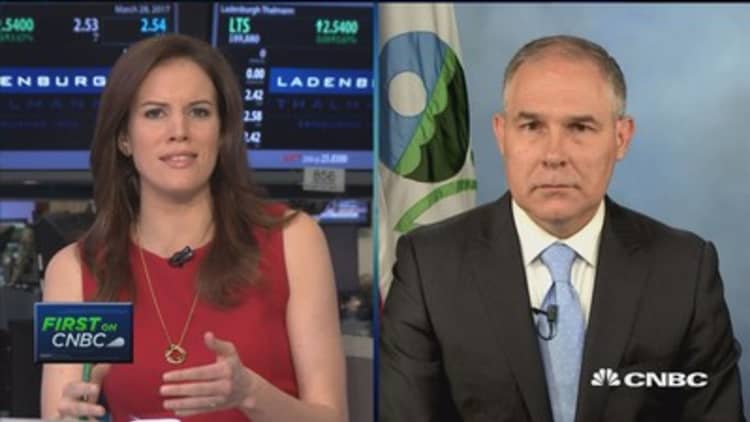
The Environmental Protection Agency will take a less aggressive approach to regulating carbon dioxide emissions than in the past, the agency's administrator Scott Pruitt signaled on Tuesday.
Pruitt spoke shortly after President Donald Trump signed an executive order aimed at scaling back the previous administration's efforts to mitigate the impact of climate change.
"I think what comes next is a much more humble view of what the EPA's response to CO2 is within the Clean Air Act," he told CNBC's "Closing Bell."
The EPA has concluded that carbon dioxide, or CO2, is the primary driver of manmade climate change. But Pruitt told CNBC earlier this month he does not currently believe CO2 is a "primary contributor" to global warming.
Trump's executive order on Tuesday set into motion a review of President Barack Obama's landmark Clean Power Plan, which aims to reduce emissions from power plants, particularly ones that burn coal. Pruitt's EPA will be responsible for writing a new rule to replace it.

Pruitt said the EPA would not issue rules that pick winners and losers.
"We're going to focus on clear air, but we're going to do so in a way that's fair and equitable to all forms of energy in this country," he said.
The Supreme Court ruled in 2007 that the EPA has the authority to regulate heat-trapping gases from automobiles. In 2014, it determined the agency could also regulate some sources of greenhouse gases, such as power plants.
Pruitt reiterated a point he made during the earlier interview: that Congress has not yet passed a law on regulating CO2. He again suggested that could be on the agenda.
"There's a very fair question that needs to be asked and answered. Are the tools in the toolbox? Does the EPA actually have the tools in the toolbox to address this issue?" he said.
"That's something that we're going to have to talk about as we go forward."


